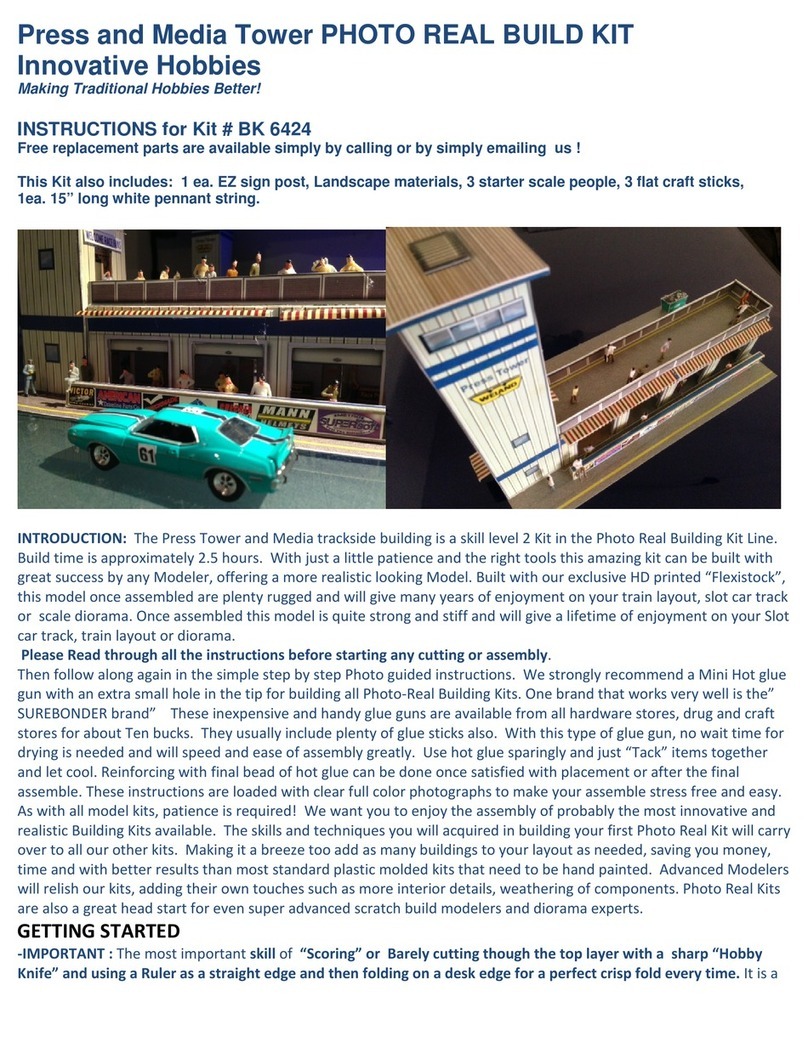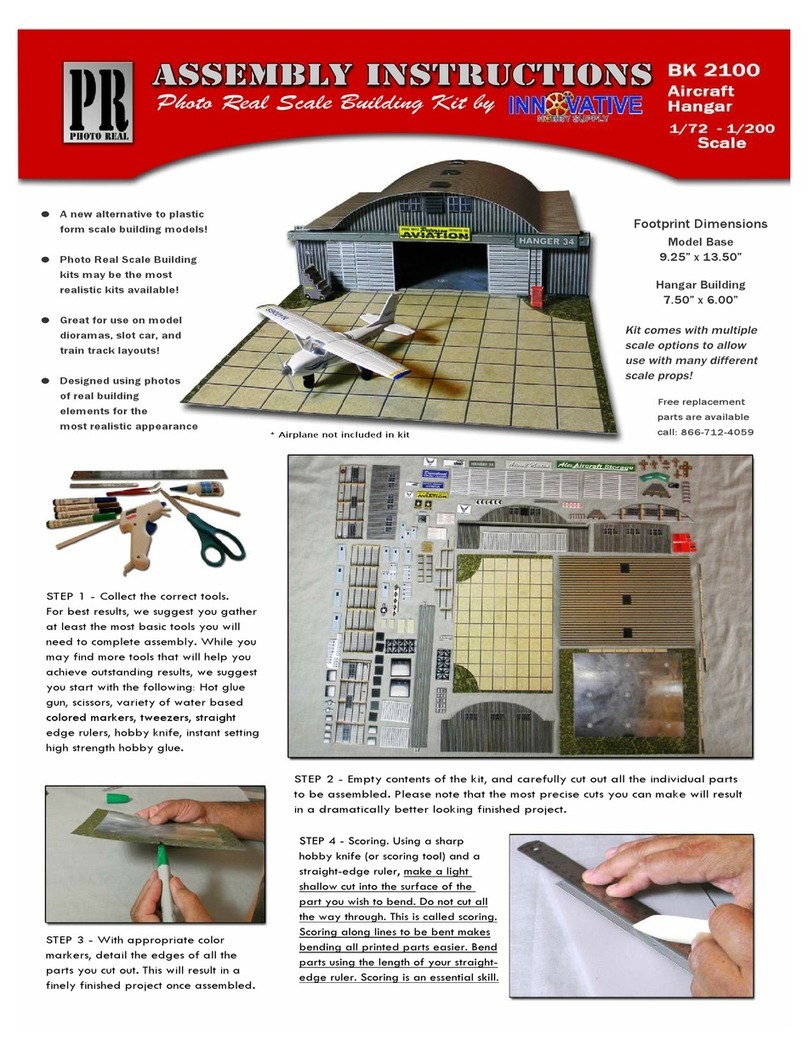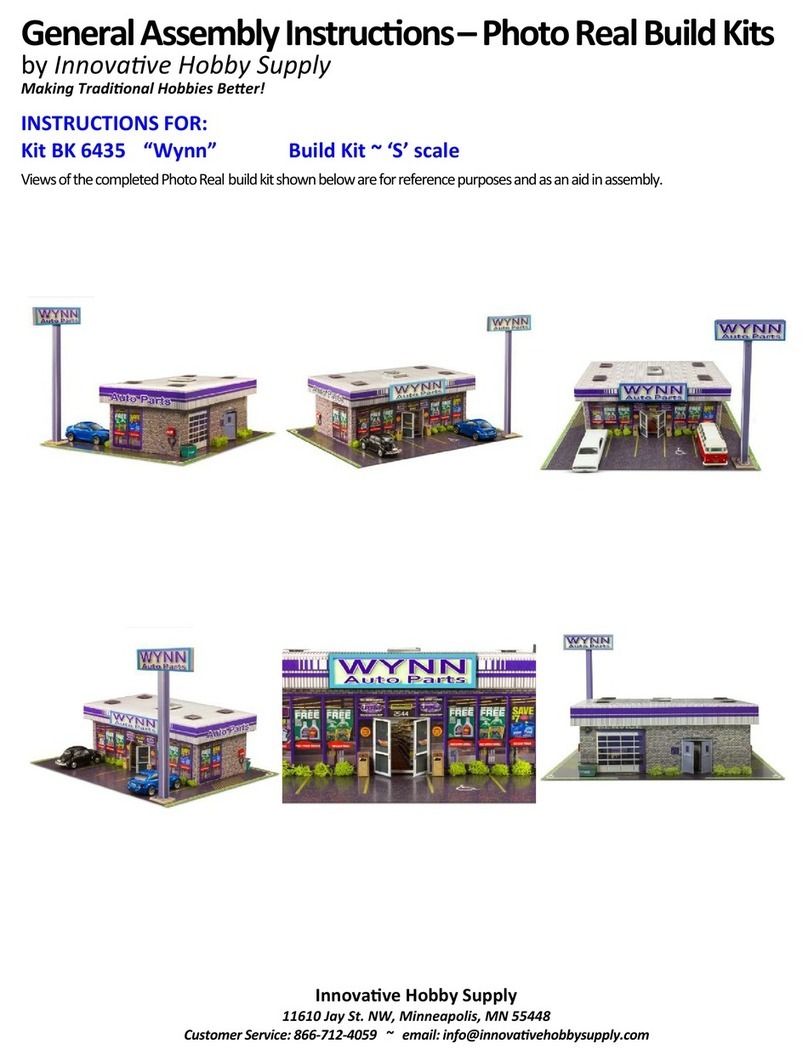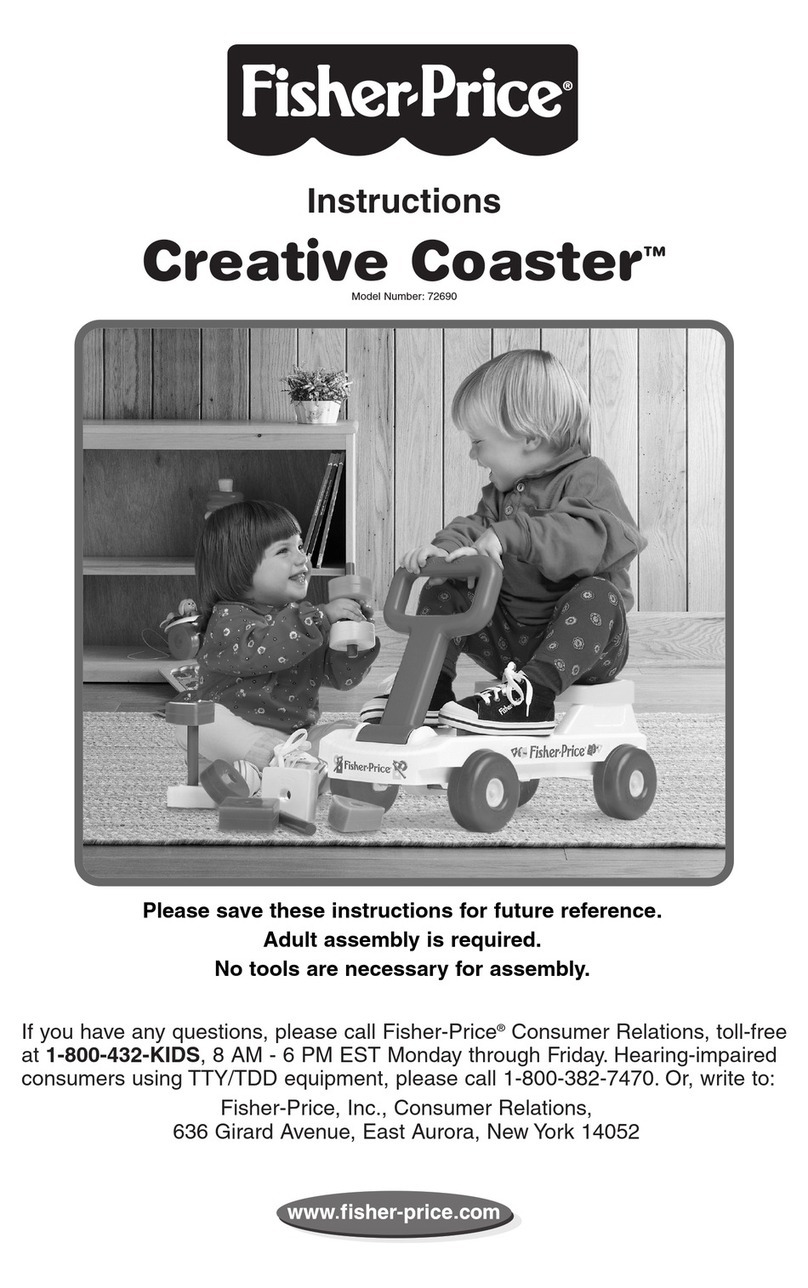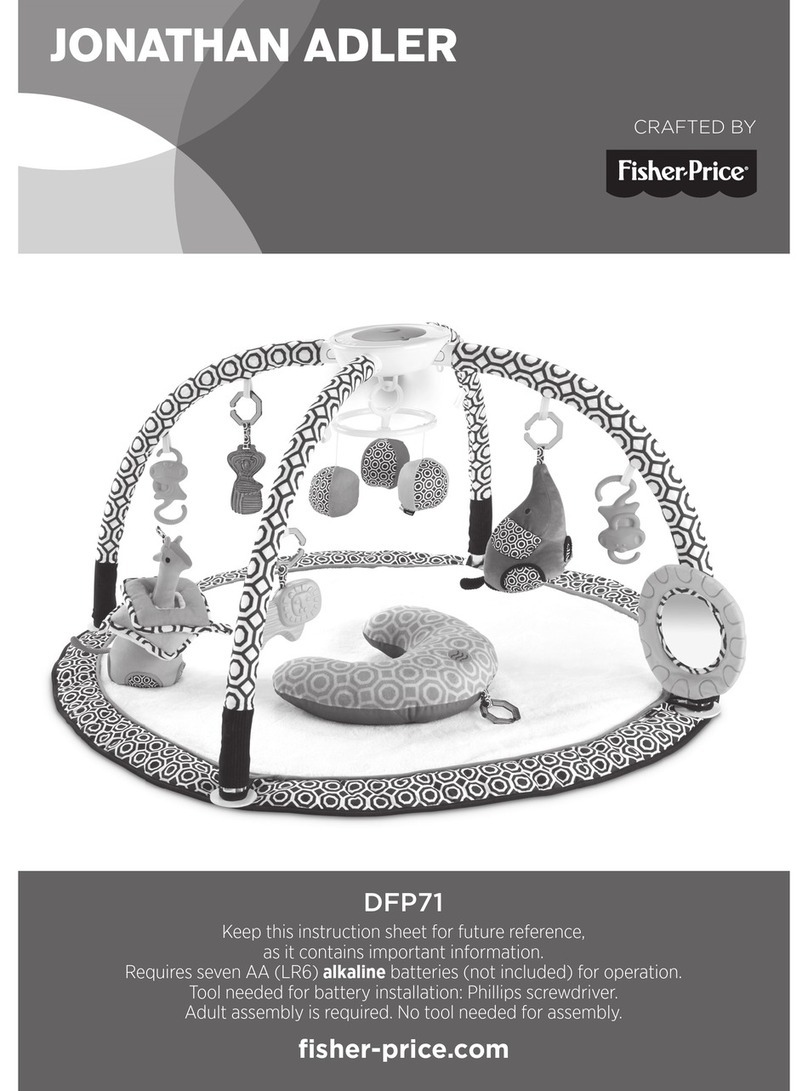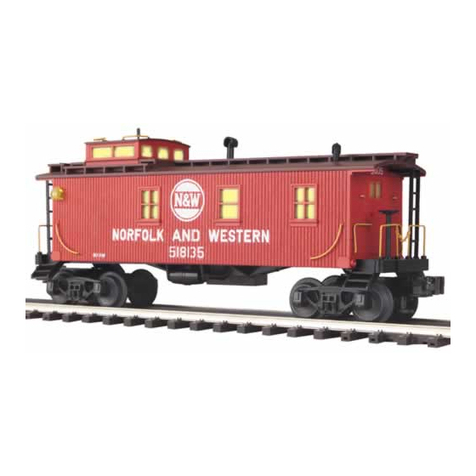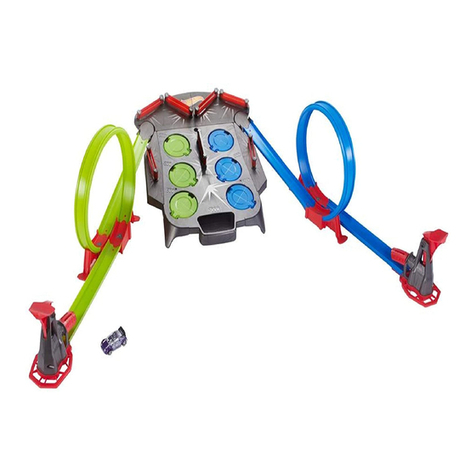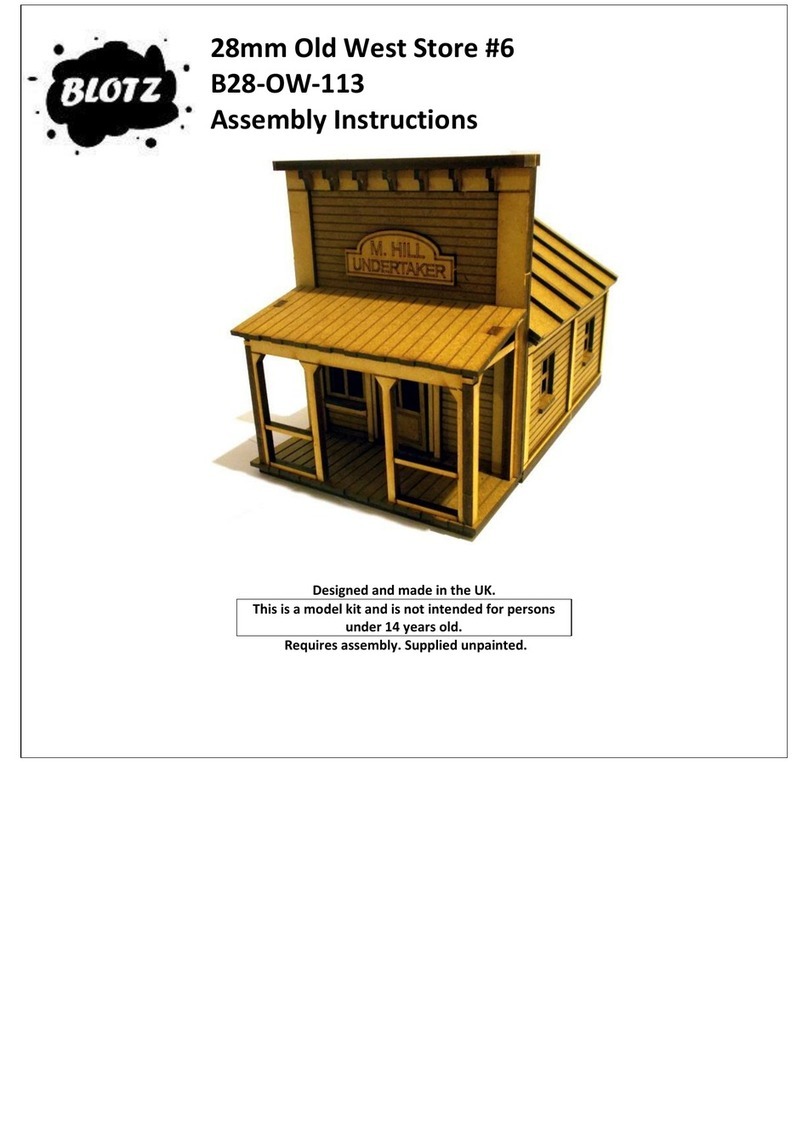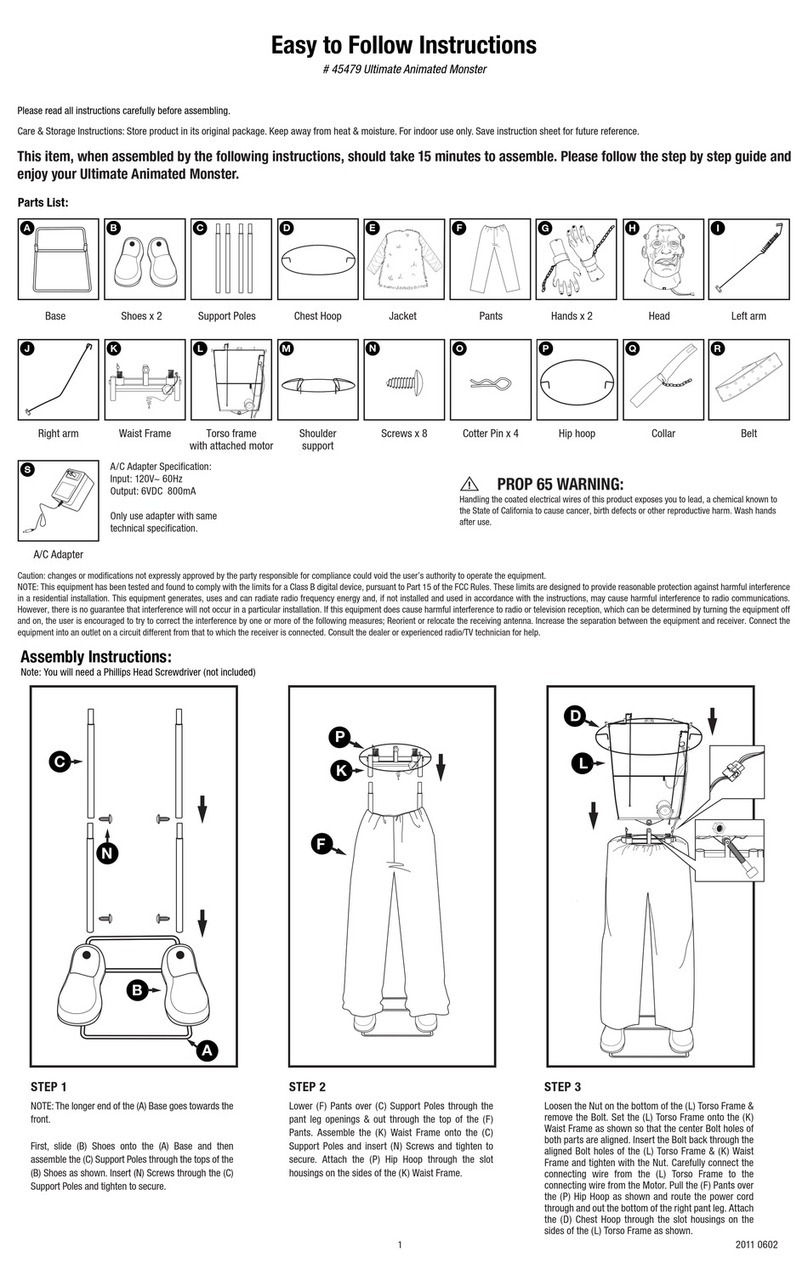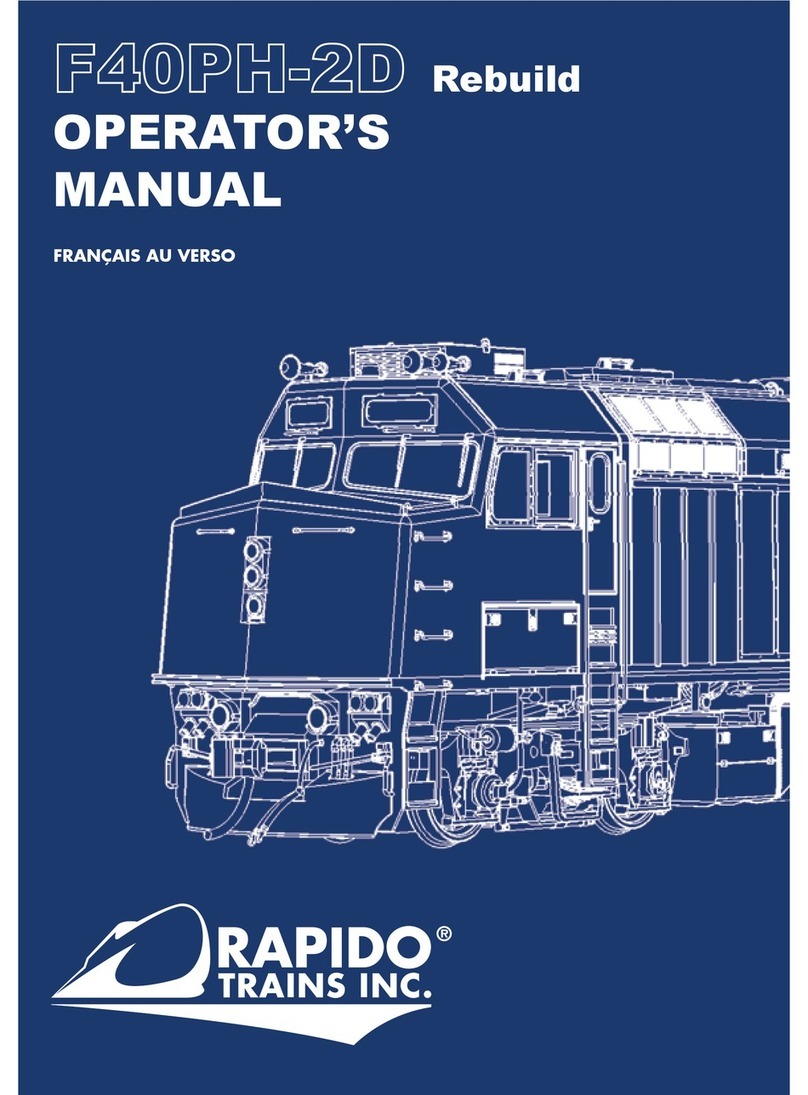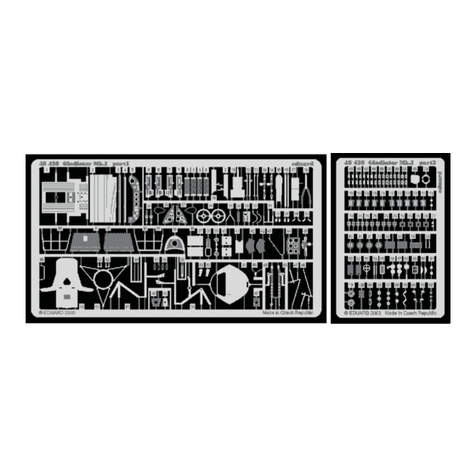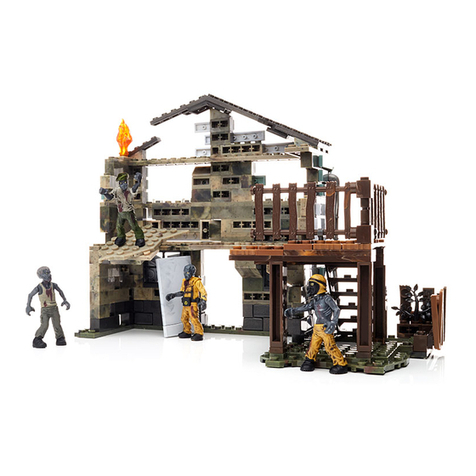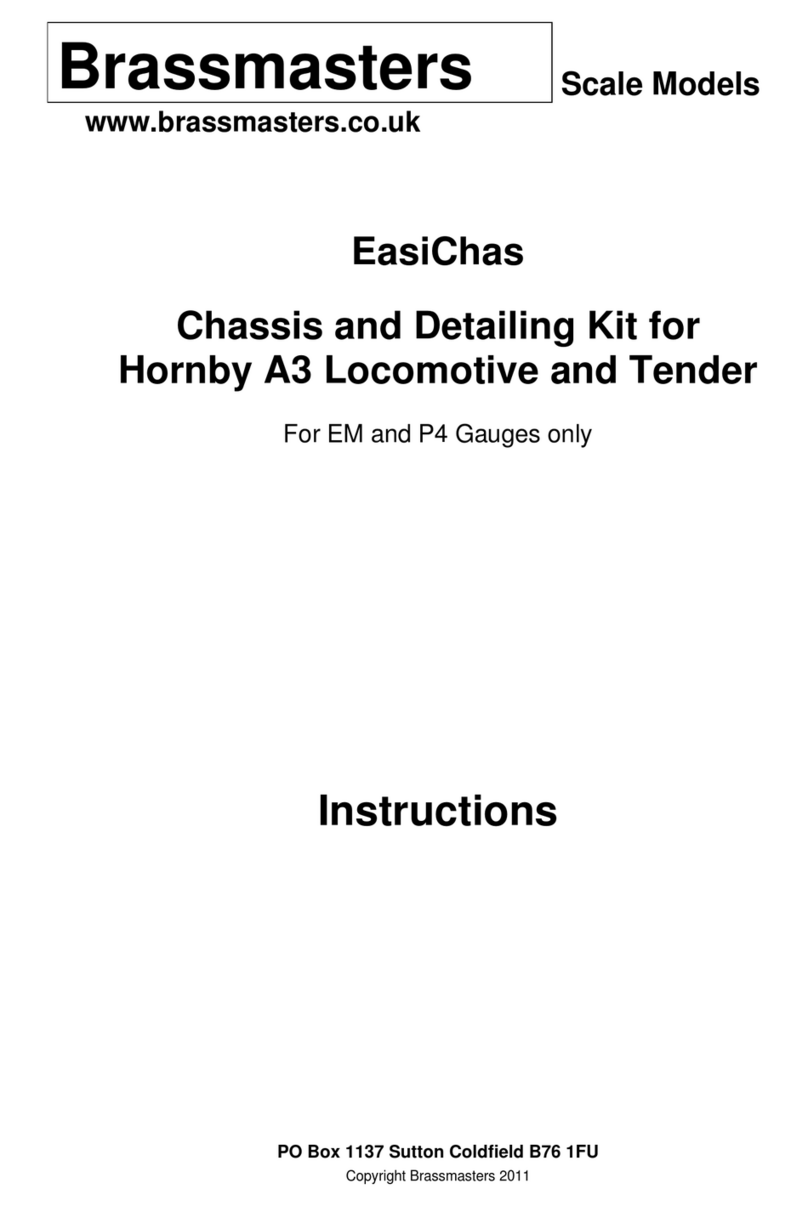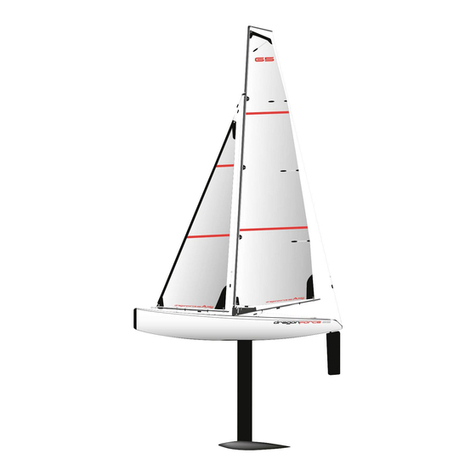
/ŶŶŽǀĂƟǀĞ Hobby Supply
Making TradiƟonalHobbies BeƩer!
© 2014 InnoǀĂƟve Hobby Supply. All rights reserved. 9 of 11
upright on its own. Carefully inspect the placement to
ensure the wall-to-base joint is correct, since the other
three walls will “key” Žī this Įrst joint. When you are
ƐĂƟƐĮĞĚ you can add more hot glue to reinforce it the
wall/base joint. Simply run a small bead along the joint and
allow the glue to cool, while conƟŶƵing to hold the wall
upright. You are now ready to ĂƩach the next wall.
3. First SidĞWall ~ Tack one of the side walls to the base
and corner simultaneously from inside the assembly at the
corner joint, making sure both walls meet to make a 90-
degree angle. Tack the top corner where the two walls
meet, then tack the middle of the walls joint. When you are
saƟƐĮed that the walls and base are properly ƉŽƐŝƟŽŶed,
apply a bead of glue along the rest of the joint, holding it
together unƟl the glue cools a bit.
4. Tack the remaining boƩom corner of the side wall to the
base while applying slight tension to keep it straight and
holding the wall upright. Allow the glue to cool. When you
are saƟƐĮed with the placement, tack the side wall to the
base in several places along the wall-to-base joint from
inside the assembly. Allow the glue to cool. Carefully
examine the assembly to this point. Once you are saƟsĮed,
start at the corner joint and run a bead of hot glue no more
than halfway along the ďŽƩom joint to reinforce the bond.
Proceed to Step 5.
5. Tip: The secret to success is to Įrst tack the walls and
corners together in the proper ƉŽƐŝƟŽŶƐ For the corner
joints, you’ll want to tack the two walls together and to the
base at the same ƟŵĞ This will hold everything in place
perfectly to assemble the remaining walls
6. ^ĞĐŽŶĚ SidĞWall ~ Repeat Steps 3 and 4 to ĂƩach the
second side wall. Again, only apply the ĮŶĂů reinforcing
bead of glue half way along the joint. This provides
ƐƵĸĐŝĞŶƚ Ňexibility to ensure the last corner joint can be
glued together without leaving any gaps.
7. BaĐŬ Wall ~ Dry Įt the back wall fully in contact with the
two side walls and the base. Ensure that all the corner
joints Įt perfectly. From inside the assembly, tack the
ďŽƩŽŵ corner of the back wall to the Įrst side wall. Tack
the top corners of the two walls together then tack the
joint in the middle. Allow the glue to cool. When you are
saƟƐĮed with the placement, run a reinforcing bead of glue
halfway along the walls joint from about the middle to the
base. Allow the glue to cool before proceeding.
8. Make sure the ďŽƩŽŵ corner of the back wall is ŇƵƐŚ with
both the boƩom corner of the side wall and the base. Tack
the boƩom corner into place and allow the glue to cool.
Now follow the same procedure in Step 6 to ĂƩach the
opposite side of the back wall to the second side wall.
9. Examine the assembly. If all looks good, ĮŶŝƐh tacking the
back wall to the base along the joint. Allow the glue to cool.
Now ĮŶŝƐh applying a reinforcing bead along the four wall
joints and four base joints to complete this ƉŽƌƟŽŶ of the
assembly.
ƐƐĞŵďůŝŶŐ thĞRoof
There are Įve types of roofs:
I. Flat roofs ~ are ŽŌĞŶ found on commercial buildings like
hotels andhospitals. Build kits with ŇĂƚ roofs over hang the
walls by small margin or border to provide a working space for
gluing. For this type of roof, it is very important to test Įt the
roof prior to Įnal assembly to see how much margin is
provided.
a. Invert the assembly and lay it on top of the roof component
showing boƩom side up. Adjust the posiƟon of the assembly so
the margin is even on all sides. Then trace the overhang margin
with a sharp pencil. This pencil line shows proper placement of
the upper walls to the roof and where to apply the glue.
b. Tack the roof to the front wall in several places. Then tack
the back wall while applying slight downward pressure to
keep the roof Ɵght to the back wall. Allow the glue to cool.
Now aƩach each of the four corners, one at a Ɵme, while
applying downward pressure and allowing the glue to cool.
Đ.Examine the assembly and when all looks good, reinforce
the four joints all along the roof. Slip the Ɵp of the mini
glue-gun just between the roof and wall to run a thin bead
of glue around the perimeter. Ʃach one side at a Ɵme
while applying slight downward pressure and allow one
side to cool before proceeding to the next.
Tip: Once the roof is fully ĂƩached and the glue has cooled, the
structural strength of the assembly becomes readily appareŶƚ
II. WŝƚĐhĞd roofs ~ are ŽŌĞŶ found on residenƟal homes and
smaller commercial buildings such as chain restaurants. Build
kits with pitched roofs are always scored and folded. Start by
making sure the angle of the fold is correct. Test Įt the roof to
the assembly to determine how much the roof overhangs the
walls while making sure is evenly ƉŽƐŝƟŽŶed front to back and
sides.
a. Look for any cutouts in the roof for chimneys, vents, etc.
and remove these using a hobby knife before ĂƩaching the
roof.
b. Hold the roof in posiƟon and trace along the walls with a
pencil where the walls meet the roof. This pencil line will
indicate the proper placement of the upper walls to the
roof and show you where to apply the glue.
Đ.Start with the front peak and tack it into posiƟŽŶ while
applying gentle pressure to ensure the peak makes good
contact with the wall. Allow the glue to cool. Do the same
for the opposite side. At about the mid-line of the roof over
one side wall, apply gentle pressure and tack the roof to
the side wall. Do the same for the opposite side.
NotĞ Some angled roofs (such as the ‘Sugar Creek Farm’ kit)
have a slight upliŌat the endPre-shape the roof component by
gently bending the ends of the roof upwards and test the Įƚ
Repeat as necessary ƵŶƟů you achieve consistent contact all
arounĚ The FlexStock material will conform exactly when you
apply slight downward pressure while gluing down the corner
areas of the roof to the side walls
d. Tack each corner of the roof in place. Then apply a ½-in.
bead of glue along the pencil line on one side at 2-inch
intervals while applying gently pressure to the roof and
wall to ensure good contact. Allow the glue to cool. Do the
same for the opposite side. Then follow this procedure for
the remaining two walls. Once the tacking glue is fully set
and you are saƟsĮed with the results, apply a bead of glue
along the enƟre wall-to-roof joint on all four sides.
III. ƵƌǀĞĚ roofs ~ are ŽŌĞŶ found on specialized commercial
buildings such as Quonset huts and airplane hangars. Curved
roofs are formed Įrst by shaping the roof component on the
sharp edge of a desk or table print-side-up just enough to get a
curve started. Now roll the material in a loose spindle being
careful not to crease it to shape the curve a liƩle more.












